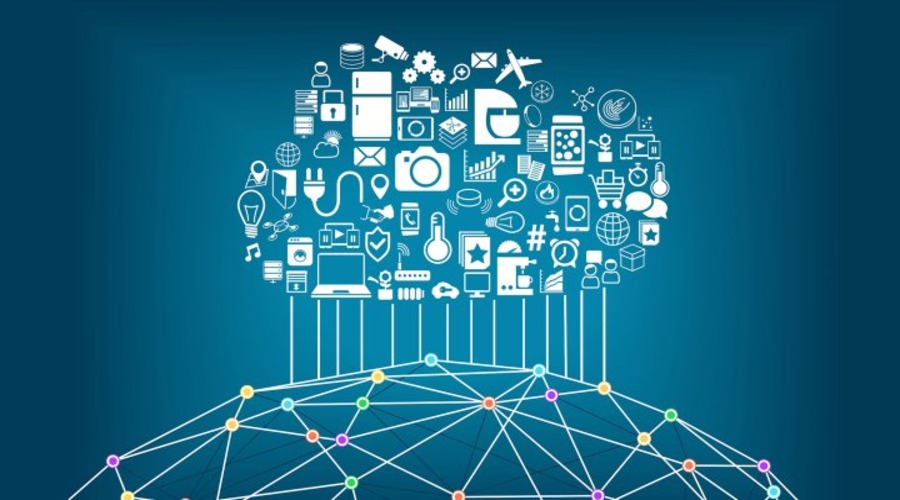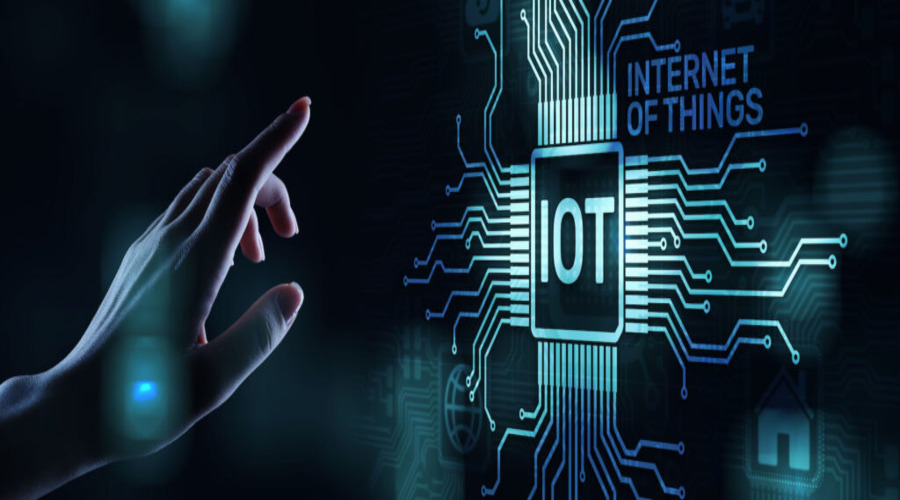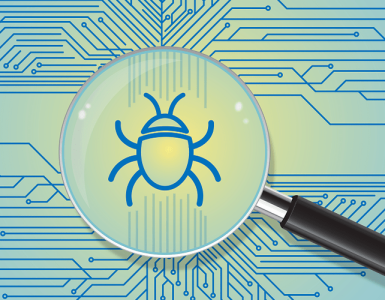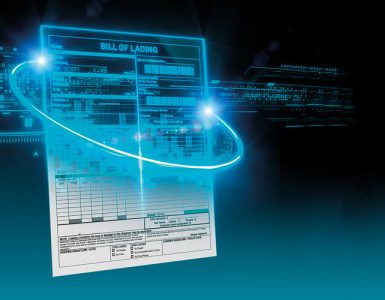In recent years, the combination of blockchain and the Internet of Things (IoT) has emerged as a transformative force across various industries. One area where this technology integration shows immense potential is in the energy sector. By leveraging blockchain and IoT, decentralized energy grids and peer-to-peer energy trading can revolutionize the way we produce, distribute, and consume energy. In this article, we will explore the concept of integrating blockchain and IoT in the energy industry and the implications it holds for a more sustainable and efficient future.
Introduction: The Promise of Blockchain and IoT in Energy
The energy industry is undergoing a significant transformation, driven by the need for sustainability, efficiency, and the integration of renewable energy sources. Traditional centralized energy systems often face challenges in managing energy generation, distribution, and consumption effectively. However, by combining blockchain and IoT technologies, a decentralized energy grid can be established, enabling more efficient and transparent energy transactions.
Understanding Blockchain Technology
Blockchain, at its core, is a decentralized and immutable ledger that records transactions across multiple computers. It provides a secure and transparent platform where participants can execute and verify transactions without the need for intermediaries. Each transaction is grouped into blocks, linked together in a chain, hence the name “blockchain.” The technology ensures transparency, security, and traceability of energy transactions in a decentralized grid.
The Role of IoT in Energy Systems
The Internet of Things (IoT) refers to the interconnected network of devices and sensors that collect and exchange data. In the energy sector, IoT devices can monitor and control energy generation, consumption, and storage. These devices gather real-time data, such as energy usage, grid performance, and environmental conditions, enabling better decision-making and optimization of energy resources. By integrating IoT with blockchain, data integrity and accuracy can be guaranteed.

Benefits of Integrating Blockchain and IoT in Energy Grids
The integration of blockchain and IoT in energy grids brings forth several notable benefits. Firstly, it enables the creation of decentralized energy systems, where energy can be generated, stored, and distributed locally. This decentralization reduces dependency on traditional centralized power plants, enhances energy resilience, and promotes the use of renewable energy sources. Secondly, the transparency and immutability of blockchain ensure trust and accountability among participants, reducing the risk of fraud and manipulation. Additionally, the use of smart contracts on the blockchain automates energy transactions, eliminating the need for intermediaries and reducing transaction costs.
Integrating blockchain and IoT technologies in energy grids brings forth a wide range of benefits. Here are the key advantages of this integration in a concise list of pointers:
- Decentralized Energy Generation: Blockchain and IoT enable the creation of decentralized energy grids, allowing energy to be generated locally and reducing dependency on centralized power plants.
- Increased Energy Efficiency: IoT devices and sensors can collect real-time data on energy consumption, enabling better monitoring and optimization of energy usage, ultimately leading to increased energy efficiency.
- Transparency and Traceability: Blockchain technology ensures transparency and traceability of energy transactions, as every transaction is recorded on a decentralized ledger, enhancing accountability and reducing the risk of fraud.
- Improved Grid Management: IoT devices can provide real-time data on grid performance, enabling proactive maintenance, fault detection, and faster response times to ensure the smooth operation of energy grids.
- Peer-to-Peer Energy Trading: Integrating blockchain and IoT enables peer-to-peer energy trading, allowing consumers to buy and sell energy directly to each other. This empowers individuals and promotes the use of renewable energy sources.
- Cost Reduction: By eliminating intermediaries and automating transactions through smart contracts, blockchain and IoT integration reduces transaction costs associated with energy trading and management.
- Enhanced Security: Blockchain’s decentralized and cryptographic nature ensures data integrity and protection against cyber threats, providing a more secure environment for energy transactions and sensitive information.
- Renewable Energy Integration: The combination of blockchain and IoT facilitates the integration of renewable energy sources into the grid, promoting a greener and more sustainable energy ecosystem.
- Grid Resilience: Decentralized energy grids, supported by blockchain and IoT, are more resilient to disruptions and failures, as energy generation and distribution can be localized and diversified.
- Empowered Consumers: Integrating blockchain and IoT gives consumers greater control over their energy usage, enabling them to make informed decisions, monitor their consumption, and participate in energy trading.
In summary, integrating blockchain and IoT in energy grids offers benefits such as decentralized energy generation, increased efficiency, transparency, peer-to-peer trading, cost reduction, security enhancement, renewable energy integration, grid resilience, and empowered consumers. This integration holds immense potential for shaping a more sustainable and efficient energy future.
Ensuring Security and Privacy in Decentralized Energy Systems
As with any technological advancement, security and privacy are crucial considerations when integrating blockchain and IoT in energy systems. Blockchain’s cryptographic techniques and decentralized nature provide a robust security framework. However, additional measures are necessary to safeguard sensitive data and ensure privacy compliance. Encryption, access controls, and secure communication protocols play a vital role in protecting data integrity and maintaining user privacy.
Peer-to-Peer Energy Trading: Empowering Consumers
One of the most exciting aspects of integrating blockchain and IoT in energy systems is the emergence of peer-to-peer (P2P) energy trading. P2P energy trading allows consumers to buy and sell excess energy directly to other consumers within a decentralized grid. Smart contracts facilitate these transactions, ensuring transparency and automated settlement. P2P energy trading empowers consumers by giving them control over their energy usage, promoting energy efficiency, and fostering community collaboration.
Case Studies: Real-World Applications of Blockchain and IoT in Energy
Several real-world projects and initiatives are already exploring the integration of blockchain and IoT in energy systems. For example, the Brooklyn Microgrid project in New York leverages blockchain and smart meters to enable P2P energy trading among participants. The project enables local energy producers to sell excess energy directly to their neighbors, promoting a more sustainable and resilient energy ecosystem. Similarly, the WePower platform utilizes blockchain and IoT to enable renewable energy crowdfunding, allowing individuals to invest in and benefit from clean energy projects.
Overcoming Challenges and Roadblocks
While the integration of blockchain and IoT in energy systems holds immense potential, it also faces challenges that need to be addressed. Scalability, interoperability, and regulatory frameworks are key areas that require attention. As the number of IoT devices and energy transactions increases, scalability becomes crucial to maintain system efficiency. Interoperability standards need to be established to ensure seamless integration between various devices and platforms. Additionally, governments and regulatory bodies must adapt to the evolving energy landscape, creating an enabling environment for blockchain and IoT innovations.
Overcoming challenges and roadblocks in integrating blockchain and IoT in energy grids requires careful consideration and strategic approaches. Here are the key points highlighting how these obstacles can be addressed:
- Scalability: Implementing scalable solutions that can handle the increasing number of IoT devices and energy transactions is crucial for the widespread adoption of blockchain and IoT in energy grids.
- Interoperability: Establishing interoperability standards and protocols to ensure seamless integration between different devices, platforms, and stakeholders is essential for efficient communication and data exchange.
- Regulatory Frameworks: Governments and regulatory bodies need to adapt and create supportive policies that address the unique challenges and opportunities presented by blockchain and IoT in energy grids.
- Data Security and Privacy: Implementing robust security measures, such as encryption and access controls, to protect sensitive data and ensure privacy compliance is essential for gaining trust and widespread acceptance.
- Energy Consumption: Continual efforts to optimize the energy consumption of blockchain networks and IoT devices should be made to reduce their environmental impact and improve overall energy efficiency.
By addressing these challenges through collaboration, innovation, and regulatory support, the integration of blockchain and IoT in energy grids can overcome roadblocks and unlock their full potential, leading to a more sustainable and resilient energy infrastructure.
Future Outlook and Potential for Scalability
The future outlook for integrating blockchain and IoT in energy grids is promising. As the technology matures and adoption increases, decentralized energy systems and P2P energy trading will become more prevalent. The potential for scalability lies in the ability to integrate blockchain and IoT with other emerging technologies such as artificial intelligence (AI) and edge computing. This convergence will enable real-time decision-making, energy optimization, and further decentralization of energy grids.
Conclusion
Integrating blockchain and IoT in decentralized energy grids and peer-to-peer energy trading presents a paradigm shift in the energy industry. The combination of these technologies enables transparent, efficient, and sustainable energy transactions, empowering consumers and promoting the use of renewable energy sources. However, it is crucial to address security, privacy, scalability, and regulatory challenges to realize the full potential of this integration. The future holds great promise as we transition towards a more decentralized, resilient, and environmentally friendly energy ecosystem.
FAQs (Frequently Asked Questions)
1. Can blockchain and IoT be applied to existing energy infrastructure? Yes, blockchain and IoT can be integrated into existing energy infrastructure. Retrofitting IoT sensors and implementing blockchain technology can enhance the efficiency and transparency of energy systems.
2. How does peer-to-peer energy trading benefit consumers? Peer-to-peer energy trading allows consumers to have more control over their energy usage, buy clean energy directly from producers, and potentially earn revenue by selling excess energy.
3. Is blockchain technology energy-intensive? Blockchain technology does require energy for processing transactions. However, advancements in blockchain protocols aim to reduce energy consumption and improve efficiency.
4. What role does data privacy play in blockchain and IoT integration? Data privacy is a critical consideration in the integration of blockchain and IoT. Encryption and secure data management protocols are essential to protect sensitive information.
5. How can governments support the integration of blockchain and IoT in energy grids? Governments can create supportive policies and regulations that encourage innovation, promote interoperability, and provide incentives for the adoption of blockchain and IoT in energy systems.





